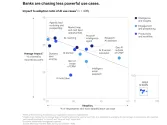A quick guide to cloud computing in Hong Kong
By Victor TsaoFew people today would disagree that the cloud is one of the most exciting and disruptive phenomena in the world of enterprise IT over the past two decades. Companies in Hong Kong and China are rapidly embracing this new architecture, and it is important for IT vendors to set out their vision of how it can best be used, and to make that vision a reality.
Cloud computing is not something that an end-user purchases – it should make no difference to end-users whether an application is delivered via the cloud. Cloud computing is a new architecture that can help organizations to reduce infrastructure costs, increase efficiency, and/or address concerns about capacity and scalability.
There is a simple test to determine whether your organization is deploying true cloud computing:
- Can your end-users self-provision infrastructure services or applications without IT department involvement?
- Do you think about your resources (servers, storage and networking) as pooled resources, or as separate entities in individual silos?
- Can your services and applications automatically expand and contract according to your organization's needs?
- Can you track usage of your infrastructure or applications to determine how much compute power is being used, and track this by user or by department?
We focus on three clouds or what we call '3 PCs' which contribute to our two key focuses –
mobile workstyles and cloud services.
Let's take a moment here to explain the differences between them, and why all are relevant to most organizations in Greater China today.
Personal cloud – This is about embracing mobile workstyles and connecting people to their desktops, applications and data, enabling them to collaborate and work from any device or location. The growth of mobile devices is driving the consumerization of enterprise IT and challenging traditional definitions of "the office".
Private cloud – This is a collection of on-premise infrastructure, desktops, applications and data, delivered on demand by enterprise IT behind their firewall. Private cloud takes all of the benefits of increased elasticity, self-service and granular usage tracking while giving organizations greater control over their infrastructure and security.
Public cloud – This is the collection of off-premise, multi-tenant infrastructure, storage and compute resources, as well as SaaS applications and data, all delivered on demand by external service providers. Many organizations in the region are already using such technology to power their public clouds, including Korea Telecom, TATA and IDC Frontier.
There is also a fourth concept, the hybrid cloud, which we call "cloud convergence". This model is becoming increasingly popular with enterprise customers.
Hybrid clouds are formed when private and public clouds are closely integrated, giving IT the flexibility to choose where application workloads are run – without being locked into any particular virtual infrastructure or cloud service provider.
Our vision for powering cloud services starts at the front of the private cloud, where our approach is to provide a single point of control that unifies the provisioning, security and control of Windows, Web, SaaS and mobile apps.
At the back of the private cloud, a bridge transparently allows connections to a public cloud provider, providing limitless datacenter capacity. The third element of our cloud service focus is to enable the "building" of Amazon-style clouds – from the bare metal to high-level software services such as cloud orchestration. We also helps customers connect those clouds to other clouds with cloud management and cloud networking and finally, empower users and businesses with cloud solutions that meet business needs.
Let's take a closer look at the various ways in which organizations use cloud infrastructure, with particular reference to private cloud.
Private campus clouds are used to provide computing resources for researches, lecturers and university students. This enables easier, faster and more cost-effective access to on-demand clusters for these user groups, as well as for activities like R&D.
Development/test clouds are often used when customers using server virtualisation decide to move to the cloud. 'Dev/Test' clouds provide unparalleled ease for developers to build, update, and test applications, while reducing costs and shortening release cycles.
'Special purpose' clouds have been deployed for online gaming, social media and Web 2.0. They involve the construction of Amazon-style clouds behind firewalls, offering all the benefits of scalability but with greater security and control. Many organizations opt for a hybrid cloud that allows them to connect to a public cloud for infinite elasticity if required.
'Special purpose' clouds are also often used by enterprise customers to deliver windows desktops as a service, for greater efficiency and control.
BYOD mobile services are well-suited to cloud architecture. Whether we're talking about a internal or customer-facing services, cloud provides a very good way to enable capacity to expand or contract as required.
Disaster recovery and business continuity are two of the other benefits that the cloud can offer. Today's global environment is unpredictable, with frequent political or environmental instability. The cloud is a great way to create a failover footprint in the event of a disaster while maintaining the benefit of "pay as you go" services.
Cloud infrastructure can also assist with industry-specific variability in demand. Some variability is driven by industry dynamics – for example, retail firms in the west see a spike in business at Christmas. There are many kinds of industry variability – some recurring and predictable (such as the World Cup or the Olympics), and others less so.
Without the cloud, the only way to cope with such events is to build sufficient infrastructure capacity for the expected peak. Because most of this capacity will sit idle the rest of the time, this is inefficient. By using the cloud, this challenge is overcome, creating greater efficiency across the deployed infrastructure.




















 Advertise
Advertise







